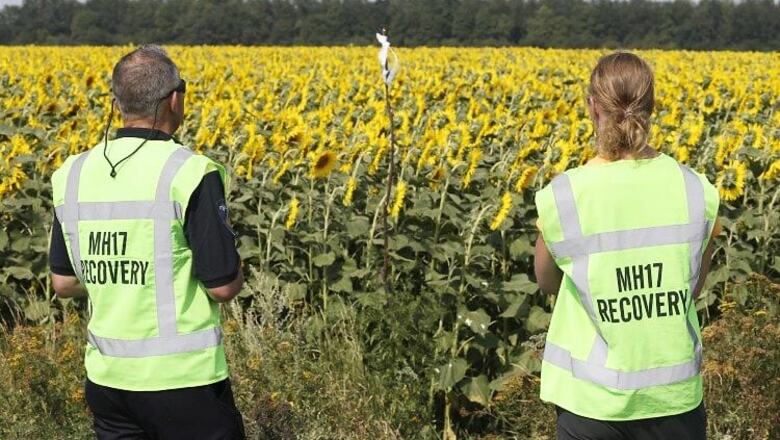
views
The Hague: Relatives of people killed on Malaysia Airlines Flight 17 said on Tuesday they have been told an official investigation has concluded the jet was destroyed by a Buk missile, but the Russian maker of the weapon says its own probe contradicts the Dutch findings.
Robby Oehlers, whose cousin Daisy was among the 298 people killed when the Boeing 777 was shot down over eastern Ukraine on July 17, 2014, said the conclusion from the Dutch investigation was shared with family members at a meeting in The Hague. "It was a Buk," he said.
The meeting with families of victims came ahead of the official presentation later on Tuesday of the investigation's final report.
Oehlers said the gathering was "as quiet as a mouse" as Dutch Safety Board chairman Tjibbe Joustra explained the conclusions of the 15-month investigation. Ukraine and Western countries contend the airliner was downed by a missile fired by Russia-backed rebels or Russian forces, from rebel-controlled territory, on July 17, 2014, killing all 298 people aboard.
However, a statement from the Russian state-controlled Almaz-Antey arms-maker said a draft of the Dutch report found the plane was shot down by a Buk missile warhead that uses submunitions shaped like a capital letter I. However, Almaz-Antey says it conducted two experiments - in one of which a Buk missile was detonated near the nose of an airplane similar to a 777 - that contradict that conclusion.
The experimental aircraft's remains showed a much different submunitions damage pattern than seen on the remnants of MH17, the company said in a statement. The experiments also refute what it said was the Dutch version, that the missile was fired from Snizhne, a village that was under rebel control. An Associated Press reporter sa a Buk missile system in that vicinity on the same day.
Almaz-Antey in June had said that a preliminary investigation suggested that the plane was downed by a model of Buk that is no longer in service with the Russian military but that was part of the Ukrainian military arsenal.
Information from the first experiment, in which a missile was fired at aluminum sheets mimicking an airliner's fuselage, was presented to the Dutch investigators, but was not taken into account, Almaz-Antey chief Yan Novikov said at a news conference. Novikov said evidence shows that if the plane was hit by a Buk, it was fired from the village of Zaroshenske, which Russia says was under Ukrainian government control at the time.
A US official told The Associated Press that the draft report said the plane was destroyed by a Buk surface-to-air missile fired from the village of Snizhne; the official who was not authorized to comment publicly, spoke on condition of anonymity.


















Comments
0 comment